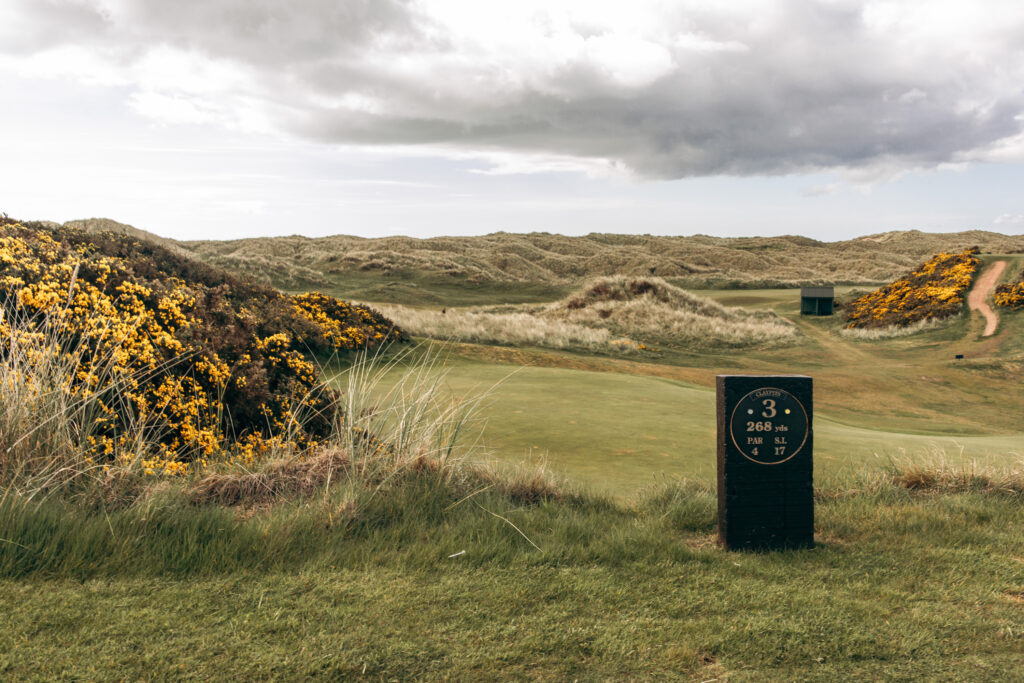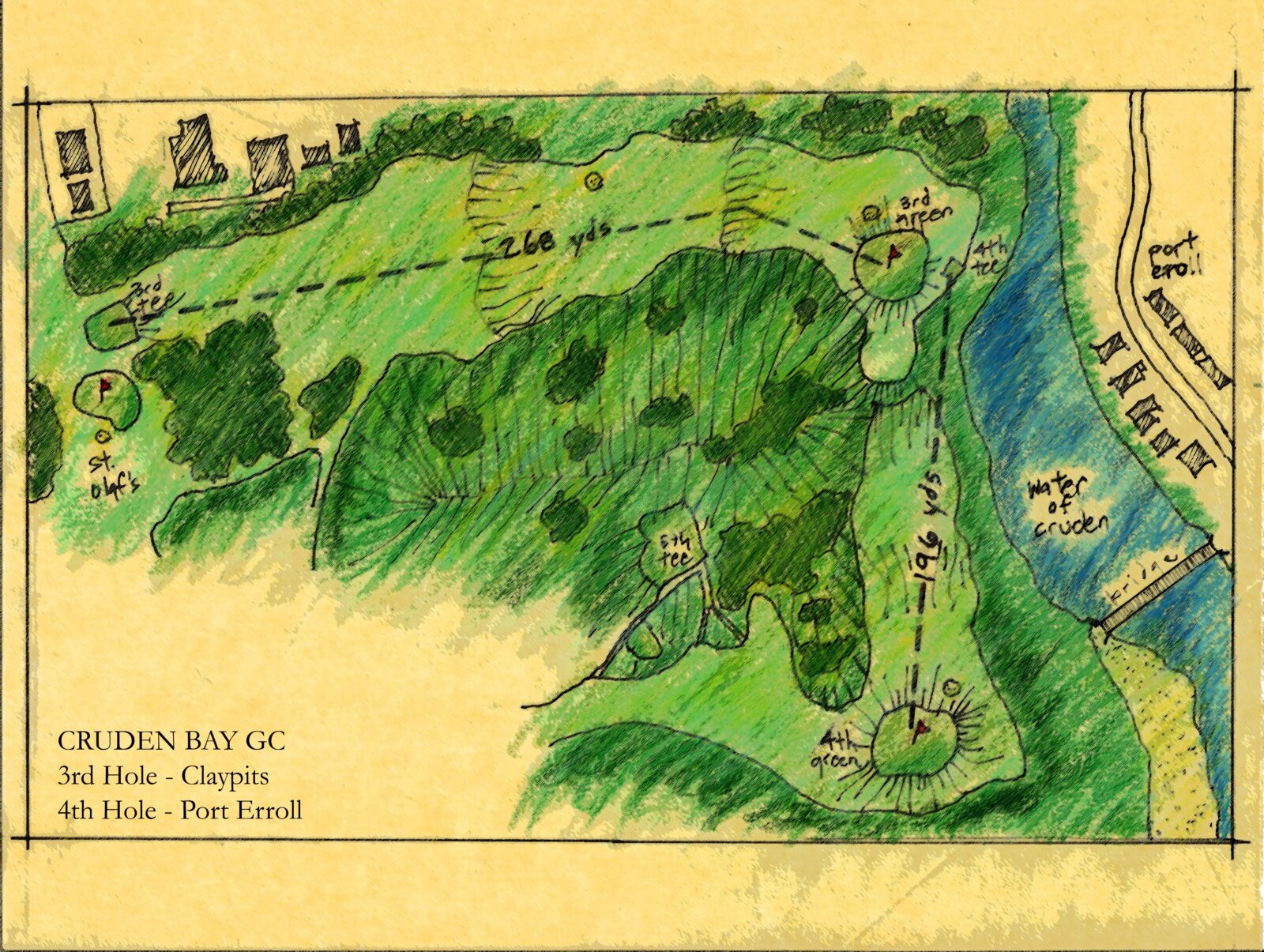A Hidden Corner of the Brilliant Morris/Simpson Links
By Jim Hartsell
“I would not for my amusement wish for a storm; but as storms, whether wished for or not, will sometimes happen, I may say, without violation of humanity, that I should willingly look out upon them from Slanes Castle.” – A Journey to the Western Islands of Scotland, Samuel Johnson, 1775

After a short winding drive from the A90 on a pleasant country road, past the Old Cruden Parish Church, my father and I got out of our grey Vauxhall Senator and beheld Cruden Bay Golf Club for the first time. It was a grey, misty day on August 10, 1994, and the view from the small car park on top of the hill – over the small, unassuming, white clubhouse – was stunning to the senses. The yellow-greenish-brown gorse covered links tumbled dramatically to the deep blue North Sea, with the ruins of mighty Slains (aka Slanes) Castle always visible on the cliffs to the northeast. It is a moment that I have never forgotten. While the reveal of the heroic linksland, first laid out for golfing by Old Tom Morris in 1897, is now experienced when you enter the upper floor bar of the wonderful “new” clubhouse, it is no less breathtaking.
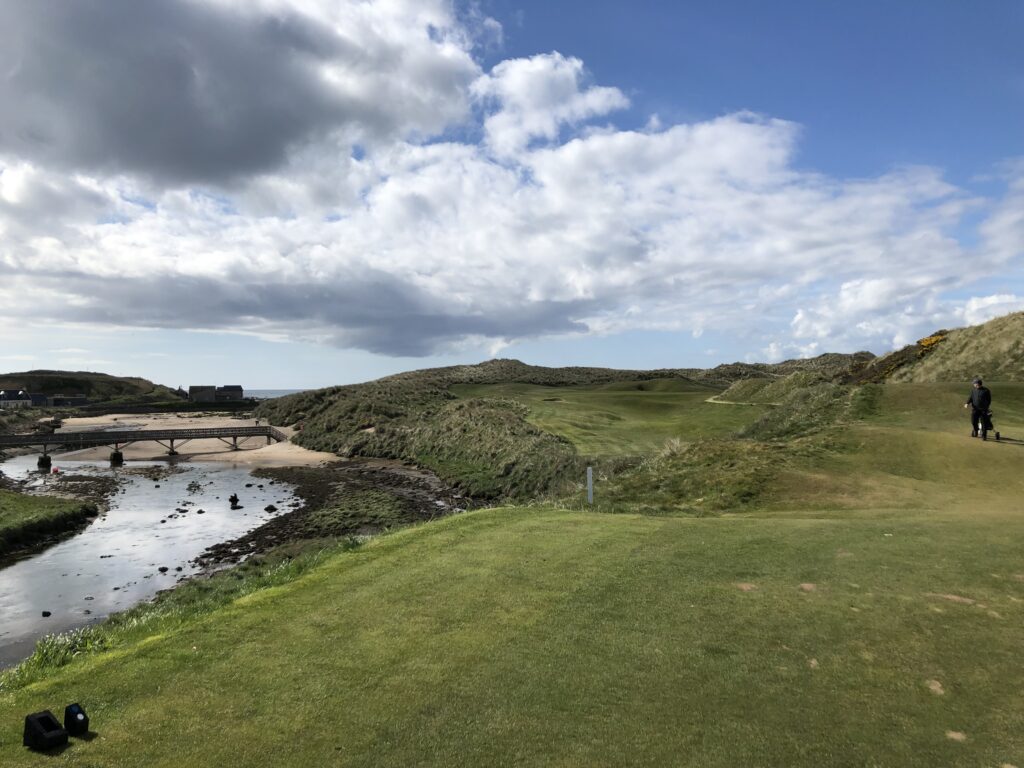
The course was originally conceived by the London North East Railway Company as a way to bring tourists to the wilds of the “remote” north. Land for the course and accompanying grand hotel was obtained in a deal with a local tenant farmer called Alexander Castel. In exchange for £40 per annum – until his lease expired in 1911 – he gave up the crofting rights over the linksland and dunes, in addition to 16 acres of good farmland. The railroad and wonderful hotel are long gone, but the links routed by Old Tom, and modified significantly by Tom Simpson in 1921, remain as a testament to the glory days of railway travel and the unmatched power of links golf.
As we were paying a mere £35 for our day ticket, the friendly pro asked if we wanted to join up with a man and his young son who were about to play the course for the 3rd day in a row. “It might help you find your way around,” he reckoned. He walked out and introduced us to the twosome, who seemed happy to show a couple of Americans around the largely deserted golf course. They were up from Glasgow for a weeklong golf holiday. We all shook hands and were quickly off the first, minding our new friend’s advice to favor the left-hand side.
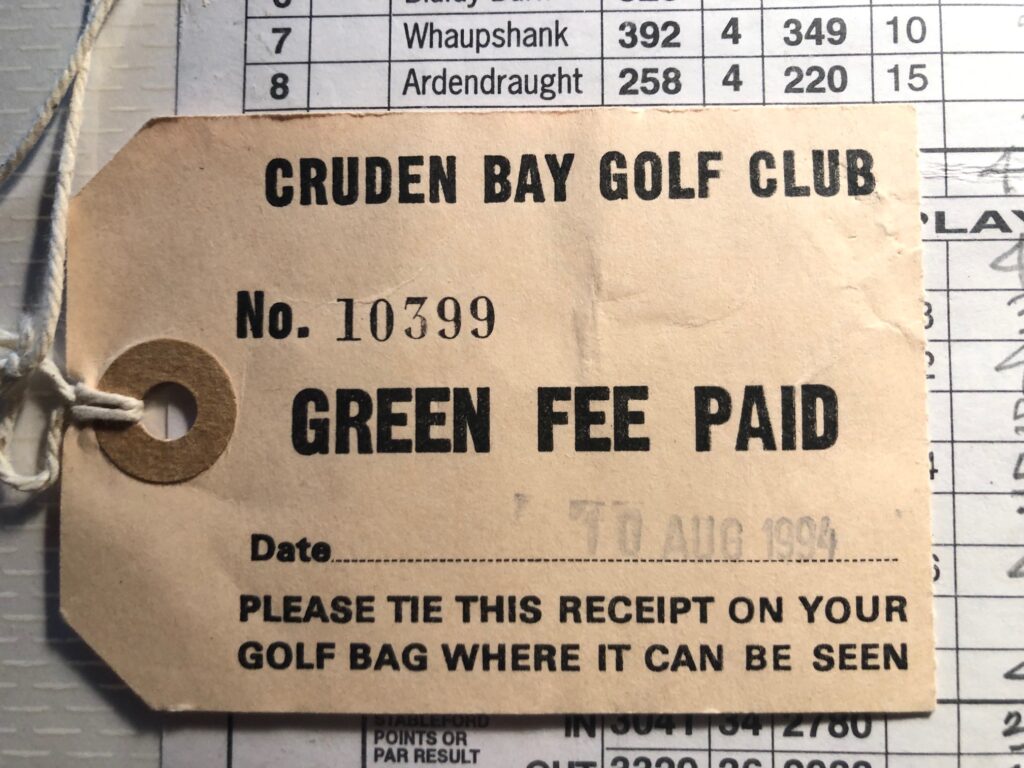
The opening two holes are good and a fine introduction for what is to come, which is one of the most dramatic stretches of links holes in golf. Our entry into the magical world of the heroic bent and gorse covered dunes began in earnest on the 3rd tee. In fairness to Tom Simpson, both the 3rd and 4th holes are solely his creation, as the club did not own this part of the property when Old Tom devised his initial routing. At 268 yards, the 3rd is a blind, drivable par 4 – a genre of hole that Scotland has perfected and where more great ones reside than at any other place. There is no way to know for sure, but I imagine that Simpson did not have to move much earth to create this part of the course.

Our guide directed us to play as close as possible to the base of the massive dune along the right. The wind was helping, and we both hit good shots – 3-woods as I recall. I hit the exact perfect speed slot from the tee. When we walked over the ridge to finally see the green and the fishing village of Port Erroll beyond, my ball was resting on the fringe, about 20 feet from the flag. I am not sure exactly why, but I chipped instead of putted. The ball hit the flagstick – way too hard – and fell in for an eagle two. I think my Dad was happier than I was, which I came to understand much later in life when my own boys started to play. “Well done!”, exclaimed our new Scottish friend.
The other way to play the 3rd is to lay back off the tee with a 5 iron, which leaves a fun 40-60 yard running pitch through the tumbling ground. The green gathers from the right and there are several ways to funnel the ball to various hole locations. It is one of my favorite shots on the course.
The 4th tee is only a few steps from the 3rd green. If the course isn’t busy – or even if it is – I urge you take a minute to stand on the 196-yard medal tee and take in the scene before you play. On your left, lies Port Erroll with the Water of Cruden flowing peacefully into the North Sea. On your right is the same massive dune which has so perfectly framed the wonderful 3rd hole. The green sits several feet above you, benched into the dune ridge beyond. It is a beautiful hole and a testament to the artistry of Tom Simpson. Wind is the main challenge here. Any shot coming up short will roll several yards back down the hill into a dip in the fairway, leaving a difficult uphill pitch.
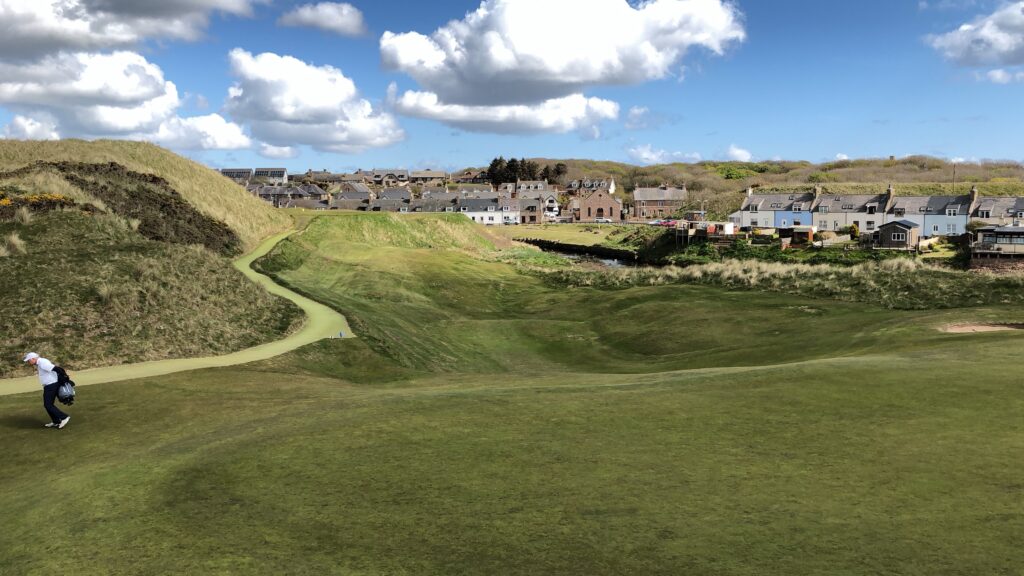
On this long-ago day, we were playing the members tees which were placed at around 120 yards. The wind was coming hard across, but also helping. With the honor, I hit a sand wedge that started 30 yards right of the flag. It rode the breeze perfectly, landed on the front of the green and rolled out a couple of inches from the flag. I had gone eagle-birdie on one of our first rounds in Scotland and my love for Cruden Bay was cemented forever. The rest of the round could never sustain such ridiculous histrionics, but it didn’t matter. Thirty years later I remember playing those two holes as if it was a round I played yesterday. I have a photo in my scrapbook of that trip of my Dad standing next to the tee shot, with the ball sitting on the edge of the hole. Once again, I think this shot made him happier than me.
Ove the years, I have returned to Cruden Bay many times. The days of the small white clubhouse and a largely empty links are a distant memory now, but the wonderful 3rd and 4th holes remain unchanged, as does the genuinely warm welcome afforded to visitors. In the category of best back-to-back links holes in golf, Claypits and Port Erroll must sit high in the rankings.
